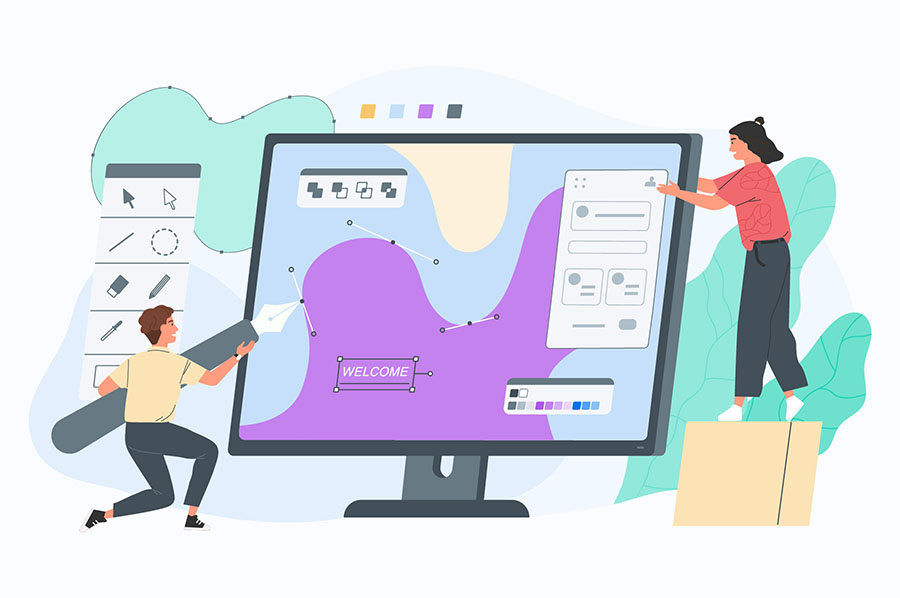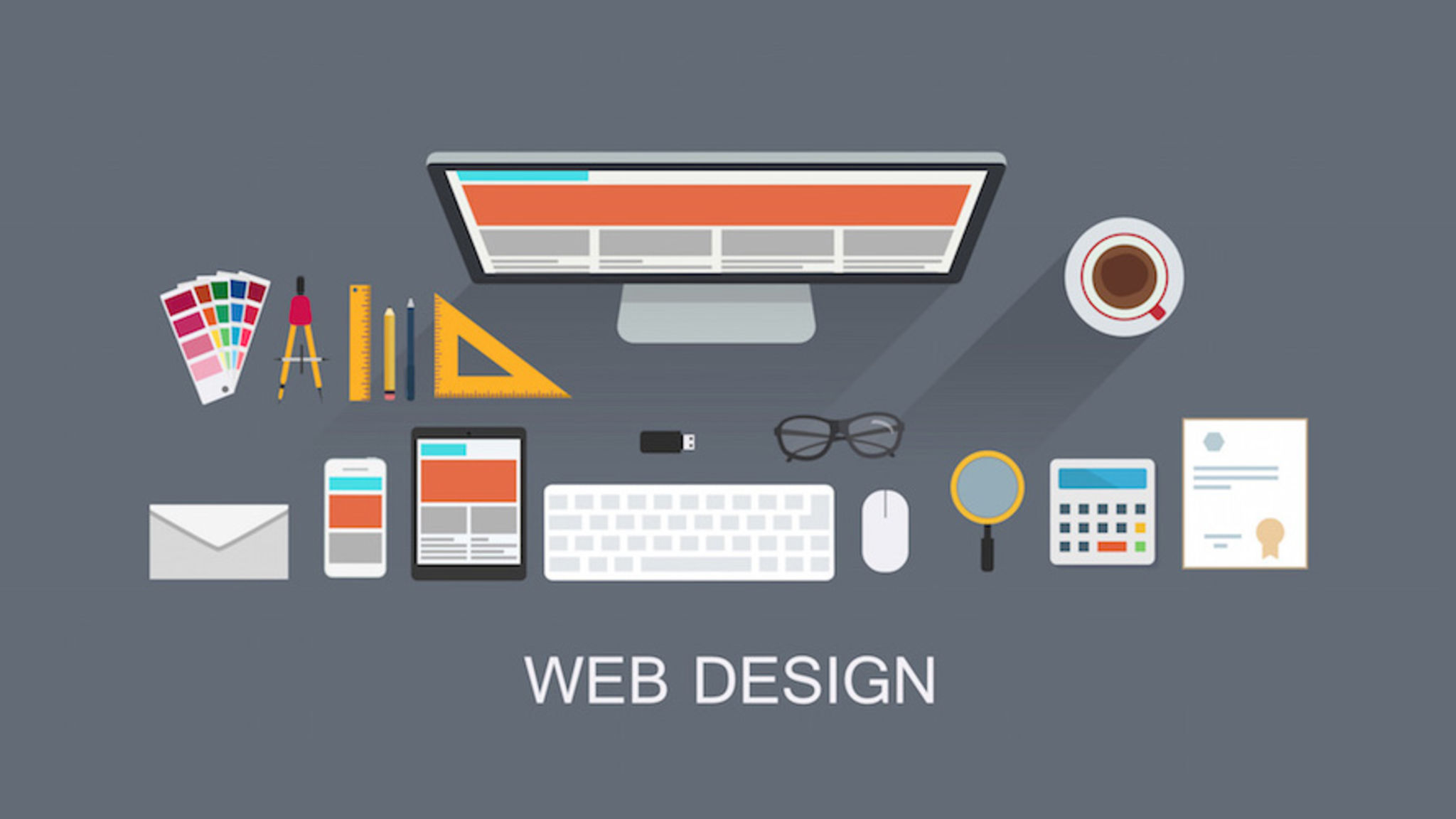All Categories
Featured
Table of Contents
- – What Is Web Design? The Ultimate Guide To Webs...
- – $899 - Custom Mobile Friendly Website Design ...
- – Why Is Web Design Important? - 6 Reasons To I...
- – Web Design Services - Networksolutions.com Ti...
- – Learning Web Design: A Beginner's Guide To Ht...
- – Web Design And Development - Invision Tips an...
- – Why Is Web Design Important? - 6 Reasons To ...
- – Ciw Web Design Series Tips and Tricks:
- – Trajectory: Atlanta Web Design Company Tips ...
- – Figma: The Collaborative Interface Design To...
- – Custom Website Design And Marketing - Inmoti...
What Is Web Design? The Ultimate Guide To Website Design ... Tips and Tricks:
Quick summary Use and the utility, not the visual style, identify the success or failure of a site. Because the visitor of the page is the only person who clicks the mouse and for that reason chooses everything, user-centric style has developed as a standard technique for successful and profit-oriented web design - web design frederick md.
and the energy, not the visual style, determine the success or failure of a site. Since the visitor of the page is the only individual who clicks the mouse and therefore chooses everything, user-centric style has ended up being a basic method for successful and profit-oriented website design. After all, if users can't utilize a function, it may also not exist.
g. where the search box must be put) as it has already been performed in a variety of articles; instead we focus on the techniques which, utilized appropriately, can result in more sophisticated design choices and simplify the process of perceiving provided information. Please observe that you may be interested in the usability-related short articles we have actually released prior to: Principles Of Great Site Style And Reliable Web Design Guidelines, In order to utilize the principles properly we initially require to understand how users engage with sites, how they believe and what are the standard patterns of users' behavior.
$899 - Custom Mobile Friendly Website Design By Go Web ... Tips and Tricks:
Visitors look at each new page, scan a few of the text, and click on the very first link that catches their interest or vaguely looks like the thing they're trying to find. There are large parts of the page they do not even look at. Most users look for something interesting (or useful) and clickable; as quickly as some promising prospects are found, users click.
If a page offers users with top quality material, they are ready to jeopardize the content with ads and the style of the website. This is the factor why not-that-well-designed websites with premium material gain a great deal of traffic over years. Material is more important than the style which supports it.

Really basic principle: If a website isn't able to meet users' expectations, then designer failed to get his job done effectively and the company loses money. The greater is the cognitive load and the less user-friendly is the navigation, the more willing are users to leave the site and search for alternatives.
Why Is Web Design Important? - 6 Reasons To Invest In Site ... Tips and Tricks:
Neither do they scan web page in a direct fashion, going sequentially from one website section to another one. Rather users satisfice; they pick the first sensible choice. As quickly as they find a link that appears like it might result in the goal, there is an excellent chance that it will be instantly clicked.
It does not matter to us if we comprehend how things work, as long as we can utilize them. If your audience is going to imitate you're developing billboard, then design terrific billboards." Users wish to have the ability to control their web browser and depend on the consistent information discussion throughout the website.
If the navigation and site architecture aren't intuitive, the variety of question marks grows and makes it harder for users to understand how the system works and how to get from point A to point B. A clear structure, moderate visual clues and easily recognizable links can help users to find their path to their aim.
Web Design Services - Networksolutions.com Tips and Tricks:

claims to be "beyond channels, beyond products, beyond distribution". What does it indicate? Since users tend to check out websites according to the "F"-pattern, these three declarations would be the very first components users will see on the page once it is loaded. Although the style itself is easy and instinctive, to comprehend what the page is about the user needs to look for the answer.
Once you have actually attained this, you can interact why the system is useful and how users can take advantage of it. People won't utilize your web website if they can't discover their way around it. 2. Don't Squander Users' Patience, In every task when you are going to use your visitors some service or tool, attempt to keep your user requirements minimal.
First-time visitors want to, not filling long web forms for an account they may never ever utilize in the future. Let users check out the website and discover your services without requiring them into sharing personal data. It's not sensible to force users to go into an e-mail address to test the function.
Learning Web Design: A Beginner's Guide To Html, Css ... Tips and Tricks:
Stikkit is a best example for an user-friendly service which needs nearly absolutely nothing from the visitor which is inconspicuous and reassuring. And that's what you desire your users to feel on your web site. Obviously, Mite needs more. The registration can be done in less than 30 seconds as the kind has horizontal orientation, the user does not even need to scroll the page.
A user registration alone is adequate of an impediment to user navigation to cut down on inbound traffic. Handle To Focus Users' Attention, As websites offer both fixed and dynamic content, some elements of the user interface draw in attention more than others do.
Focusing users' attention to particular areas of the website with a moderate usage of visual elements can help your visitors to get from point A to point B without thinking of how it in fact is supposed to be done. The less enigma visitors have, the they have and the more trust they can establish towards the company the site represents.
Web Design And Development - Invision Tips and Tricks:
Aim For Function Exposure, Modern web styles are usually criticized due to their approach of assisting users with visually appealing 1-2-3-done-steps, large buttons with visual effects etc. From the design point of view these components actually aren't a bad thing.
The website has 9 primary navigation options which are visible at the very first look. The choice of colors might be too light. is an essential principle of effective user interface style. It does not really matter how this is achieved. What matters is that the content is well-understood and visitors feel comfortable with the way they communicate with the system.
com gets directly to the point. No cute words, no overemphasized statements. Rather a price: just what visitors are trying to find. An optimum option for effective writing is touse brief and concise expressions (come to the point as quickly as possible), usage scannable design (classify the content, use multiple heading levels, utilize visual elements and bulleted lists which break the circulation of consistent text blocks), usage plain and unbiased language (a promotion does not need to sound like advertisement; give your users some reasonable and unbiased reason that they must use your service or remain on your site)6.
Why Is Web Design Important? - 6 Reasons To Invest In Site ... Tips and Tricks:
Users are seldom on a site to enjoy the style; additionally, for the most part they are looking for the info despite the style - web design frederick md. Make every effort for simplicity rather of complexity. From the visitors' point of view, the best website design is a pure text, with no advertisements or further content blocks matching precisely the query visitors utilized or the material they've been trying to find.
Finch clearly presents the info about the website and gives visitors an option of alternatives without overcrowding them with unnecessary content. Not only does it assist to for the visitors, but it makes it possible to view the info presented on the screen.
Complex structures are more difficult to check out, scan, evaluate and work with. If you have the choice between separating 2 design segments by a visible line or by some whitespace, it's usually better to utilize the whitespace option. (Simon's Law): the much better you handle to supply users with a sense of visual hierarchy, the much easier your content will be to view.
Ciw Web Design Series Tips and Tricks:
The very same conventions and guidelines must be used to all elements.: do the most with the least quantity of cues and visual elements. Clearness: all elements need to be developed so their significance is not ambiguous.
Conventions Are Our Pals, Standard style of website components doesn't lead to a dull website. In fact, as they minimize the learning curve, the need to figure out how things work. It would be an use problem if all websites had different visual discussion of RSS-feeds. That's not that different from our routine life where we tend to get used to fundamental concepts of how we organize information (folders) or do shopping (positioning of products).
understand what they're anticipating from a site navigation, text structure, search placement etc. A case in point from usability sessions is to translate the page in Japanese (assuming your web users don't understand Japanese, e. g. with Babelfish) and provide your usability testers with a task to discover something in the page of different language.
Trajectory: Atlanta Web Design Company Tips and Tricks:
Test Early, Test Frequently, This so-called TETO-principle must be used to every web style project as use tests typically offer into significant issues and issues related to an offered design. Test not too late, not too little and not for the wrong factors.
Some crucial points to bear in mind: according to Steve Krug, and testing one user early in the task is better than testing 50 near the end. Accoring to Boehm's very first law, errors are most frequent during requirements and style activities and are the more expensive the later they are eliminated.
That suggests that you develop something, test it, repair it and then check it again. There might be issues which have not been found throughout the very first round as users were almost blocked by other problems.
Figma: The Collaborative Interface Design Tool. Tips and Tricks:

This holds for designers too. After you've dealt with a website for couple of weeks, you can't observe it from a fresh viewpoint anymore. You know how it is built and for that reason you understand precisely how it works you have the knowledge independent testers and visitors of your website wouldn't have.
It can be linked to other areas such as graphic style, user experience, and multimedia arts, but is more appropriately seen from a technological perspective. It has ended up being a large part of individuals's daily lives. It is difficult to think of the Internet without animated graphics, various styles of typography, background, videos and music.

During 1991 to 1993 the Web was born. Text-only pages might be viewed using an easy line-mode web browser. In 1993 Marc Andreessen and Eric Bina, developed the Mosaic browser. At the time there were several browsers, nevertheless the majority of them were Unix-based and naturally text heavy. There had actually been no integrated method to graphic design components such as images or sounds.
Custom Website Design And Marketing - Inmotion Hosting Tips and Tricks:
The W3C was developed in October 1994 to "lead the World Wide Web to its complete capacity by establishing common procedures that promote its advancement and guarantee its interoperability." This prevented any one company from monopolizing a propriety web browser and shows language, which might have modified the impact of the Web as a whole.
As this has happened the innovation of the web has also moved on. There have also been considerable modifications in the way people use and access the web, and this has altered how sites are designed.
Learn more about Lovell Media Group LLC or TrainACETable of Contents
- – What Is Web Design? The Ultimate Guide To Webs...
- – $899 - Custom Mobile Friendly Website Design ...
- – Why Is Web Design Important? - 6 Reasons To I...
- – Web Design Services - Networksolutions.com Ti...
- – Learning Web Design: A Beginner's Guide To Ht...
- – Web Design And Development - Invision Tips an...
- – Why Is Web Design Important? - 6 Reasons To ...
- – Ciw Web Design Series Tips and Tricks:
- – Trajectory: Atlanta Web Design Company Tips ...
- – Figma: The Collaborative Interface Design To...
- – Custom Website Design And Marketing - Inmoti...
Latest Posts
Web Design And Development - Invision Tips and Tricks:
Web Design Icon:
Web Design Studio & Digital Marketing Agency • Gravitate Tips and Tricks:
More
Latest Posts
Web Design And Development - Invision Tips and Tricks:
Web Design Icon:
Web Design Studio & Digital Marketing Agency • Gravitate Tips and Tricks: